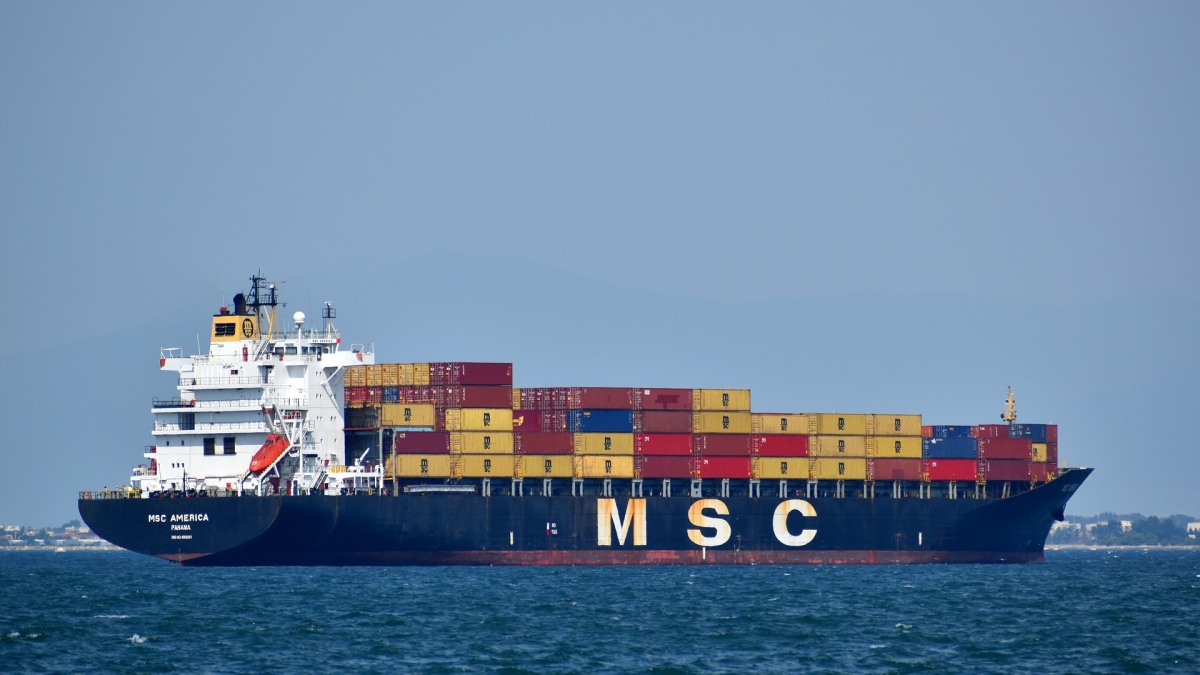Pandemic reveals weakness in companies' supply chains, ASU professors say

The COVID-19 pandemic has wreaked havoc on businesses around the globe, and the crisis has laid bare a weak spot for many companies, according to two professors at Arizona State University.
Dale Rogers
“It’s weird, but most companies have a very surface-level knowledge of their supply networks,” said Dale Rogers, the ON Semiconductor Professor of Business in the Supply Chain Management department in the W. P. Carey School of Business.
Rogers and Thomas Choi, a professor of supply chain management at ASU, co-authored a recent article in the Harvard Business Review titled “Coronavirus Is a Wake-Up Call for Supply Chain Management.” The article calls on companies to pay more attention to their entire supply chains.
The article calls attention to the fact that many companies were blind-sided by the impact of the pandemic, particularly those who acquired supplies from Wuhan, China, the first area to be shut down by the virus. That’s because many companies did not even realize that they have parts coming from that region of China because they don’t fully map their supply networks. For example, a manufacturer might make a product with many parts from several different suppliers. Those suppliers, the first tier, have their own suppliers for parts and raw materials, the second tier. That second tier, in turn, has its own suppliers. Some products might have many tiers of suppliers that the manufacturer itself doesn’t know about.
Thomas Choi
“This is a topic that I’ve been working on since the mid-1990s,” said Choi, co-director of the Complex Adaptive Supply Networks Research Accelerator, an international research group. “I mapped the supply network for the Honda Accord center console. It had about 60 parts and it took me three years to map that.”
There are several reasons why companies have only a murky idea of where they get their parts.
One is secrecy due to competition. The first-tier supplier might not want the manufacturer to know where it gets its parts and sub-assemblies because the manufacturer could then go directly to the second tier, cutting out the original supplier.
“For instance, 30 years ago, Walmart used to buy a lot of stuff through manufacturers’ representatives, who were sales guys that would represent different products,” said Rogers, who also is the director of the Frontier Economies Logistics Lab and the co-director of the Internet Edge Supply Chain Lab at ASU.
“Around 1990, Walmart sent an email that they were going directly to the source, and most of those guys went out of business because Walmart started working directly with the suppliers.”
Also, suppliers can change frequently.
“In some cases, it can change day to day, particularly with suppliers that are smaller,” Rogers said. “For certain kinds of transactional buys, you have a supplier this week and won’t next week.”
Another reason is the sheer amount of work and expense required to do the mapping.
“We talked to some Japanese executives after the tsunami about 10 years ago,” Choi said. “As part of their risk-management strategy, they decided to map out their entire supply network. It took a team of 100 people over a year. It requires that kind of effort.”
Also, companies are more focused on saving money in the supply chain than on making sure revenues are stable at the other end.
“If you compare a dollar saved on the upstream side versus a dollar gained on the downstream side from sales, dollars saved on the upstream side have more impact on the bottom line,” Choi said.
“CEOs put a lot of pressure on procurement managers to save costs. The investors keep their eyes on it.”
So companies might decide that careful scrutiny of their networks is not worth the effort.
“From their perspective, they select a supplier, they write a contract and the supplier agrees to do a certain job a certain way and they deliver the product as specified. The company’s perspective is, ‘That’s good enough,’” he said.
But a more thorough mapping could pay off when the next crisis hits, the professors said. A new kind of service company can analyze and map supply networks for corporations. The professors’ co-author on the article, Bindiya Vakil, is the founder and CEO of one of those companies, Resilinc.
“When the pandemic was just starting up, I think a lot of U.S. companies didn’t think they were going to be affected by something happening in Wuhan. But Bindiya Vakil realized that things were really changing rapidly because she had 12,000 suppliers in technology and health care mapped out just in the Wuhan area,” Rogers said.
“She could see the early warning signs that there would be trouble ahead and supply chains would be disrupted.”
The professors said that devoting resources to map supply networks can save money if a company can avoid paying a premium to get goods shipped quickly during a crisis.
One new trend is “deep trade financing,” which means companies are helping to finance their lower-tier suppliers.
“Companies are realizing that there may be a third-tier supplier that, if they go bankrupt, will create a lot of problems three months down the road,” Rogers said. “They want to make sure that supplier stays afloat.”
Managing deep into the supply chain can also reveal issues with unethical labor and sourcing practices in manufacturing facilities in developing countries where safety regulations may not be as stringent, Choi said.
“Companies talk about social responsibility and sustainability but where you want to address that is at the source. And where is the source?
“If they really look for the source, they’re looking deep into the supply chain,” said Choi, who’s written about this topic.
The focus on supply chains might also affect the job market, Rogers said.
“I think you’re going to see positions within supply chain management expand as companies really begin to realize that it’s not just purchase orders and negotiating,” he said.
“You’re really managing not just your supplier but your whole supply network.”
Top image courtesy of Pixabay
More Business and entrepreneurship
Sustainability leader and ASU alum honored for transforming business with a people-first approach
Long before Jim Fish ('86 BS in accountancy) became president and CEO of WM — formally Waste Management — in 2016, he recognized that the higher he climbed the corporate ladder, the greater the…

ASU business students take on the big leagues
Each year, sports fans from across the country flock to Arizona to attend major events like the Waste Management Phoenix Open, Fiesta Bowl and Cactus League Spring Training. These mega-events…

With help from ASU and a viral TikTok, an entrepreneur soars
Nearly five years ago, Ruben Trujillo saw his entrepreneurial dream slipping away as he wondered how he would pay his rent.Now, Trujillo’s business, Café Emporos, is featured on a national TV…



